Using Chatbots in Ecommerce: All you need to know
Providing exceptional customer service is paramount for ecommerce businesses to thrive. Online shoppers demand instant gratification and personalized experiences. Chatbots have emerged as a game-changing solution.
These conversational AI assistants revolutionize how ecommerce brands interact with their customers. They offer round-the-clock support, personalized recommendations, and seamless shopping experiences.
Understanding the power of chatbots is crucial to staying ahead and delighting your customers at every touchpoint.
What is an Ecommerce Chatbot?

Definition and Purpose
An ecommerce chatbot is a conversational AI assistant designed to enhance the online shopping experience. It provides personalized support, recommendations, and assistance throughout the customer journey. These virtual agents use AI and machine learning to understand and respond to customer inquiries, mimicking human interactions.
The primary purpose of ecommerce chatbots is to streamline customer service and reduce response times. By automating routine tasks and addressing common queries, chatbots free up human resources. This allows businesses to focus on more complex issues and strategic initiatives.
Key Features and Capabilities
Ecommerce chatbots have a range of features that enable them to deliver exceptional customer service and drive sales:
- LLM Integration: AI allows chatbots to understand and interpret human language, providing relevant responses.
- Personalized Recommendations: Chatbots analyze customer data and preferences. They use this information to offer personalized product suggestions. This targeted approach helps increase sales for ecommerce businesses.
- Order Tracking and Management: Customers can track orders, check delivery status, and manage returns or exchanges.
- Omnichannel Integration: Chatbots integrate across various channels. These include websites, mobile apps, social media, and messaging platforms. This integration creates a seamless customer experience.
- Multilingual Support: Advanced chatbots support multiple languages, catering to a global customer base.
Benefits for Online Retailers
Ecommerce chatbots offer numerous benefits for online retailers:
- Improved Customer Satisfaction: Chatbots provide instant, personalized support. This enhances customer experience. It boosts satisfaction and loyalty.
- Cost Savings: Automating tasks reduces the need for human agents, resulting in significant cost savings.
- Increased Sales and Conversions: Chatbots boost sales through personalized recommendations. They also streamline checkout processes. These features lead to higher conversion rates in ecommerce.
- 24/7 Availability: Chatbots operate around the clock, ensuring customers receive assistance anytime, regardless of time zones.
- Scalability: Chatbots handle multiple conversations simultaneously, making them a scalable solution for high customer volumes.
Differences between Rule-based and AI-powered Chatbots
There are two main types of ecommerce chatbots: rule-based and AI-powered. Understanding their differences is crucial for businesses.
Rule-based Chatbots:
- Use predefined rules to respond to customer queries.
- Limited to specific scenarios and unable to handle complex queries.
- Require constant maintenance to accommodate new scenarios.
AI-powered Chatbots:
- Use AI and machine learning to understand and respond to customer queries.
- Handle complex conversations and adapt to new scenarios.
- Continuously learn and improve through interactions and data analysis.
- Offer a more human-like and personalized experience.
Check the full list of benefits of AI chatbots.
While rule-based chatbots are effective for simple tasks, AI-powered chatbots handle the complexities of ecommerce. They provide a more engaging and personalized customer experience.
Top Ecommerce Chatbot Solutions
The ecommerce chatbot market is evolving rapidly, with numerous solutions competing for businesses' attention. While each platform offers unique features, some stand out as industry leaders. Here are five top ecommerce chatbot solutions that have gained widespread recognition.
Typebot
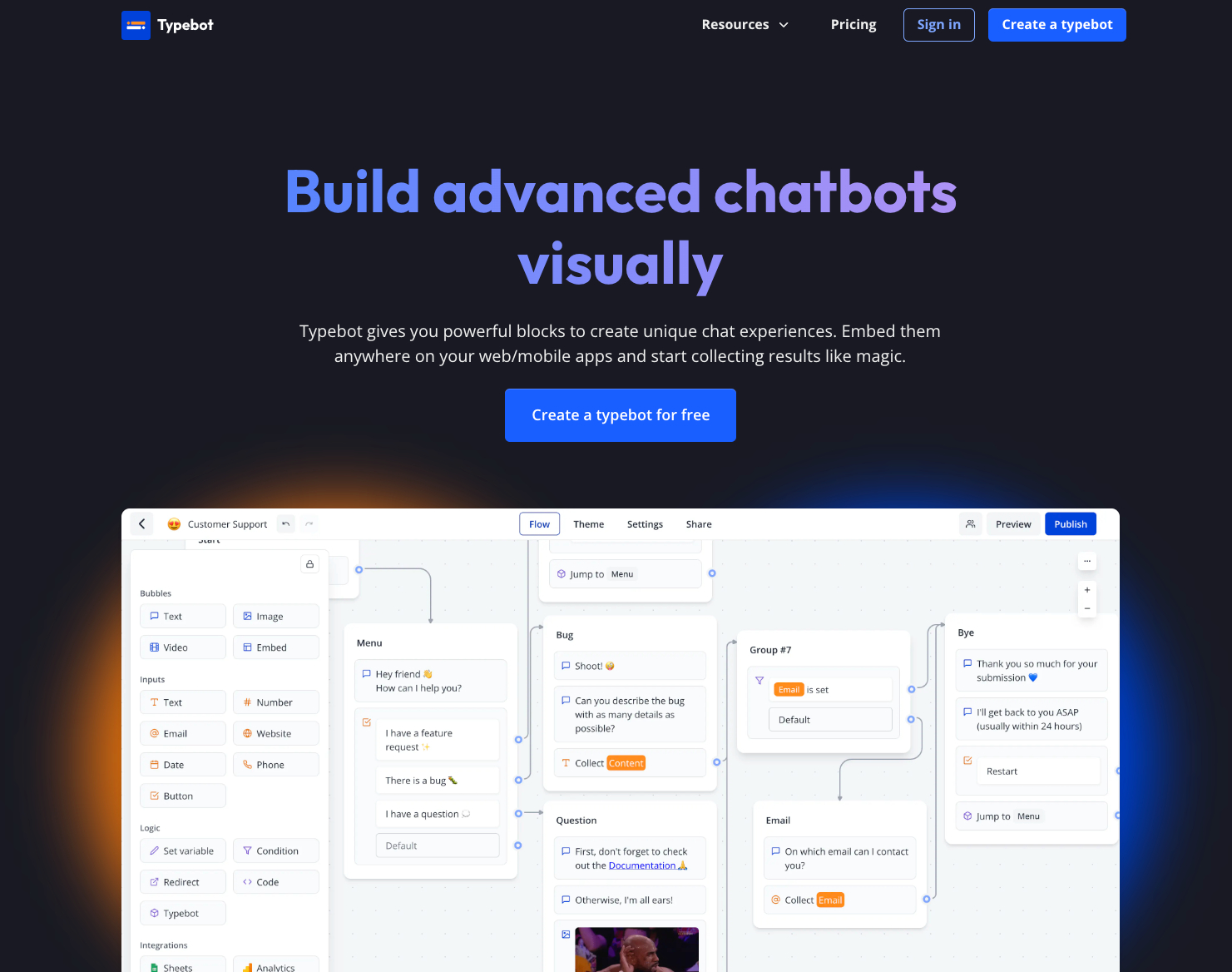
Typebot is an open-source, no-code chatbot builder. It empowers businesses to create advanced conversational experiences without any coding. Its drag-and-drop interface and extensive library of building blocks make it a versatile choice for ecommerce businesses.
Key Features:
- Visual chatbot builder with a user-friendly interface
- Seamless integration with ecommerce platforms like Shopify, WooCommerce, or Wix
- Advanced logic and branching capabilities for personalized conversations
- Integrations with OpenAI, Google Sheets, and Zapier
- Customizable theming options to match your brand's identity
Pricing:
- Free plan: 200 chats/month
- Starter ($39/month): 2 seats, 2000 chats
- Pro ($89/month): 5 seats, 10 000 chats
Tidio
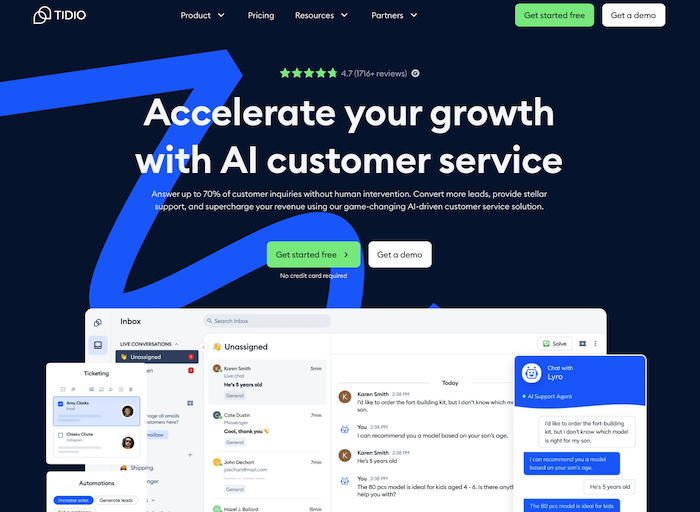
Tidio offers a live chat software. It includes chatbot workflows and visitor monitoring capabilities. The AI-powered chatbot, Lyro, understands user intent through natural language processing. Lyro delivers personalized responses to enhance customer interactions.
Key Features:
- Intuitive live chat for real-time customer support
- AI-powered chatbot with advanced natural language processing
- Integrations with major ecommerce platforms and CRM tools
- Visitor monitoring and analytics to track customer behavior
- Customizable chat widget to match your website's branding
Pricing:
- Free Plan: Includes basic chatbot and email campaign capabilities with limited features.
- Communicator Plan: Priced at $12.50 per month, this plan includes live chat features.
- Chatbots Plan: Starting at $32.50 per month, this plan focuses on chatbot functionality.
Chatfuel
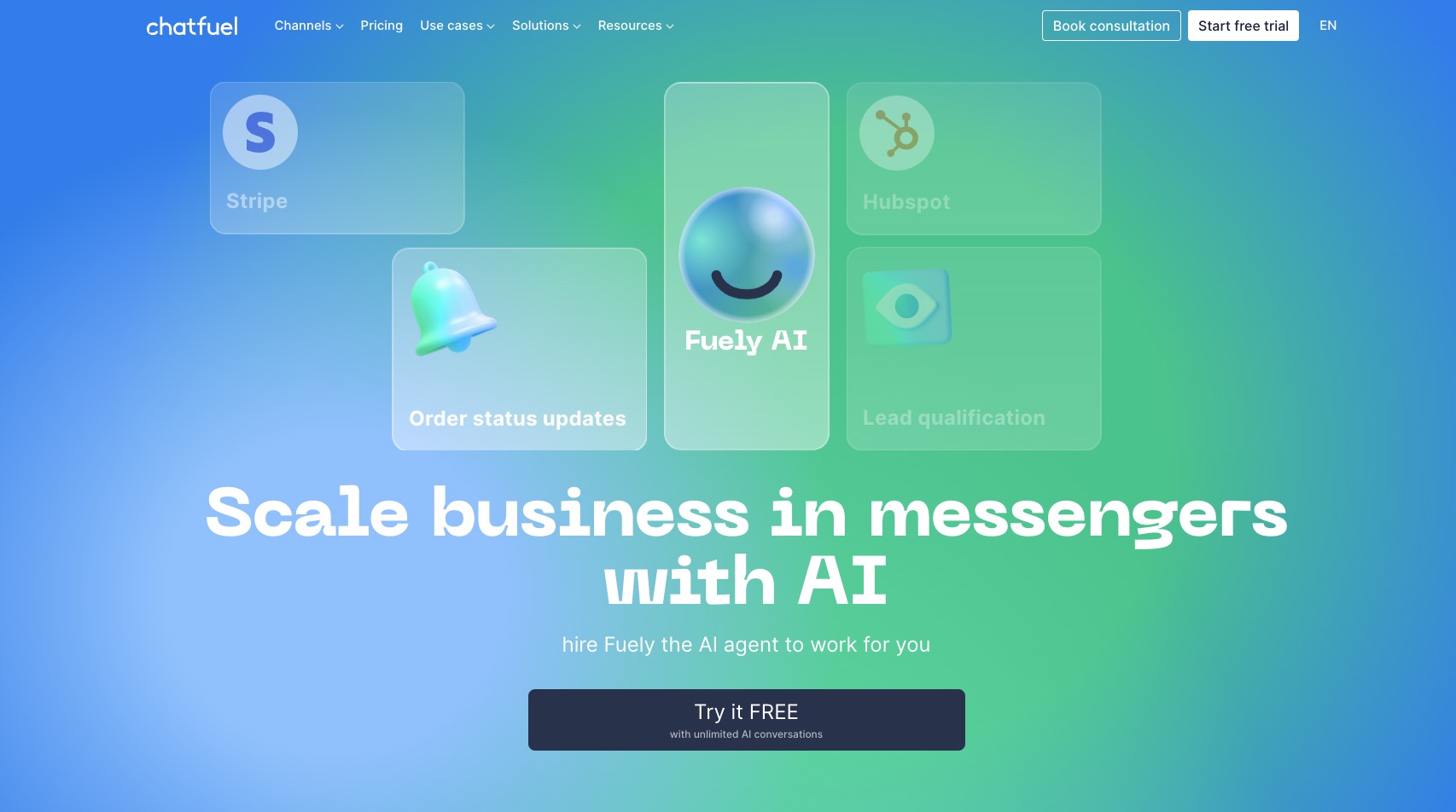
Chatfuel is a cloud-based platform for creating AI chatbots primarily for Facebook Messenger. It also supports platforms like Instagram, Telegram, and Line. Its user-friendly interface and integration capabilities make it popular for businesses seeking to automate interactions.
Key Features:
- AI chatbots capable of handling FAQs and recognizing phrases and emotions
- Configurable bot flows for collecting emails and exporting data
- CRM module for storing and segmenting customer information
- Secure data protection through encryption
Chatfuel offers multiple pricing plans, including a free version with basic features. Paid plans start at $15 per month and can go up to $300 for enterprise solutions. Pricing varies based on the platform (Facebook, WhatsApp, Instagram) and the number of conversations.
For more details, checkout the chatfuel alternatives
ManyChat
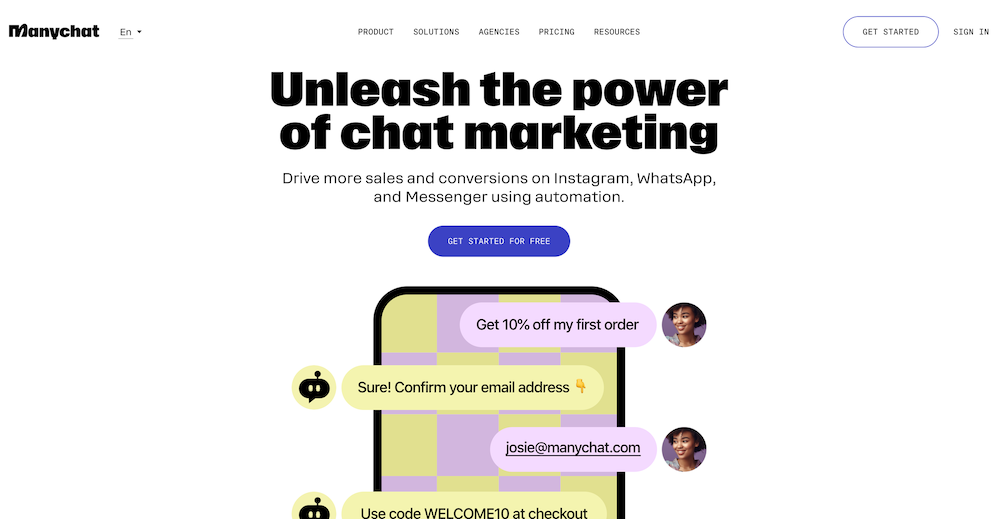
ManyChat offers chat marketing tools. It automates and customizes messaging across Instagram, Facebook Messenger, WhatsApp, and SMS. Businesses use ManyChat to engage customers effectively and boost conversions.
Key Features:
- Automated chatbot flows and drip sequences
- Custom keyword triggers and live chat capabilities
- Integration with Facebook ads for conversation starters
- Payment integration with PayPal and Stripe for in-chat purchases
- Analytics and A/B testing for optimization
Pricing:
- Free Plan: Access to basic features and engagement for up to 1,000 contacts at no cost.
- Pro Plan: Starts at $15 per month for up to 500 contacts.
Botsify

Botsify allows users to create custom chatbots for multiple messaging platforms. This AI-driven tool uses natural language processing to improve user interactions.
Key Features:
- Customizable chatbots with rich media support and third-party integrations
- AI and NLP capabilities for natural conversations
- Analytics and reporting tools to track chatbot performance
- Lead generation and sales automation features
- Dedicated customer support and professional services
Pricing
-
Free Trial: Botsify offers a 14-day free trial with access to all features.
-
Subscription Plans: After the trial, users can choose from several plans:
- Do It Yourself: $49 per month for personal use.
- Done For You: $149 per month for professional services, including a dedicated chatbot development team.
- White-label: Aimed at SMBs and agency owners, with tailored solutions.
- Custom: Pricing and features are customizable based on the customer's needs.
-
No Free Plan: Botsify does not offer a permanent free plan, but users can start with a free trial.
-
Evaluate your business needs carefully. Consider your budget and technical requirements. Then choose the right ecommerce chatbot platform. These solutions offer robust features, but selecting the best fit matters.

No trial. Generous free plan.
Essential Functions of Ecommerce Chatbots

Ecommerce chatbots enhance online shopping experiences. They guide customers through a smooth journey. These chatbots need key functions to address various customer touchpoints. Six crucial functions help deliver exceptional shopping experiences.
Answering Customer Questions
One of the primary functions of ecommerce chatbots is to provide prompt and accurate responses to customer inquiries. Whether it's product information, shipping details, or general FAQs, chatbots should understand and address customer queries naturally. This not only enhances the overall customer experience but also reduces the workload on human support teams.
Providing Product Recommendations
Personalized product recommendations are a powerful tool for increasing sales and customer satisfaction. Ecommerce chatbots can use customer data, purchase history, and browsing behavior to suggest relevant products tailored to individual preferences. This helps customers discover products they might be interested in and increases the likelihood of successful conversions.
Assisting with Order Tracking
Customers often seek updates on their order status. Ecommerce chatbots can play a crucial role in providing real-time order tracking information. By integrating with shipping carriers and order management systems, chatbots can offer customers up-to-date delivery details, estimated arrival times, and any potential delays, ensuring transparency and reducing manual inquiries.
Preventing Cart Abandonment
Chatbots tackle cart abandonment head-on. They engage customers who leave items unpurchased. These AI assistants send personalized messages to shoppers. They offer help, resolve concerns, and provide incentives.
Their goal? To encourage customers to complete their purchases. This proactive approach helps ecommerce businesses reduce their high abandonment rates.
Facilitating Upselling and Cross-selling
Ecommerce chatbots excel at identifying opportunities for upselling and cross-selling. AI-powered assistants analyze customer selections and purchase history. They suggest complementary or higher-value products based on this data.
These chatbots engage customers in natural conversations. They highlight the benefits of premium options and related items effectively.
For instance, if a customer is browsing smartphones, the chatbot might recommend protective cases, extended warranties, or newer models with enhanced features.
You can checkout our full guide on upselling using chatbot for more information.
Gathering Customer Feedback
Customer feedback is invaluable for improvia ng products, services, and the overall customer experience.
Ecommerce chatbots excel at gathering customer feedback. They engage with shoppers after purchases or interactions. These bots ask targeted questions, making it easy for customers to share their thoughts. Businesses can then use these insights to improve their services and products.
Handling Returns and Exchanges
Returns and exchanges are inevitable in ecommerce. Chatbots can streamline this process by guiding customers through the necessary steps.
From initiating a return request to providing return labels and tracking information, chatbots simplify the process and reduce the workload on customer support teams. This leads to improved customer satisfaction.
While these functions are essential, ecommerce chatbots should be tailored to meet each business's specific needs and requirements.
Implementing Chatbots in Your Online Store

Integrating chatbots into your ecommerce business can be a game-changer. However, the implementation process requires careful planning and execution. Here are key steps to successfully implement chatbots in your online store.
Choosing the Right Platform
Selecting the right ecommerce chatbot platform for your business is crucial. Consider factors such as ease of use, integration capabilities, scalability, and pricing.
Platforms like Typebot, Tidio, Chatfuel, ManyChat, and Botsify offer robust features tailored for ecommerce businesses. Evaluate their specific strengths and weaknesses to find the best fit for your needs.
Integration with Ecommerce Platforms
Seamless integration with your existing ecommerce platform is essential. Many chatbot solutions offer out-of-the-box integrations with popular platforms like Shopify, WooCommerce, and Magento. This ensures a smooth and efficient setup process. Integration allows chatbots to access and use customer data, order information, and product catalogs, enabling personalized and contextual interactions.
Designing Effective Chatbot Flows
Design effective conversational flows for your chatbot's success. Make these flows intuitive, engaging, and tailored to customer needs. Implement branching logic to guide conversations. Personalize interactions based on user data.
Utilize natural language processing to understand queries better. Create dynamic responses that adapt to individual customer behaviors. Your chatbot should evolve with each interaction, providing a seamless and responsive experience.
Testing and Optimization
Before launching your chatbot, conduct thorough testing and optimization. Simulate various customer scenarios to identify potential issues or bottlenecks. Refine the chatbot's responses and flows accordingly. Continuous monitoring and analysis of chatbot performance metrics will help identify areas for improvement and inform future optimizations.
Customizing Chatbot Appearance to Match Brand Identity
A well-designed chatbot interface can enhance the overall customer experience and reinforce your brand identity. Many chatbot platforms offer customization options. You can adjust the chatbot's appearance, including colors, fonts, and branding elements, to align with your company's visual identity. This attention to detail can contribute to a cohesive and professional brand experience.
Implementing chatbots in your online store can be complex. Approach it with a strategic mindset focused on delivering an exceptional customer experience.
Leveraging AI in Ecommerce Chatbots
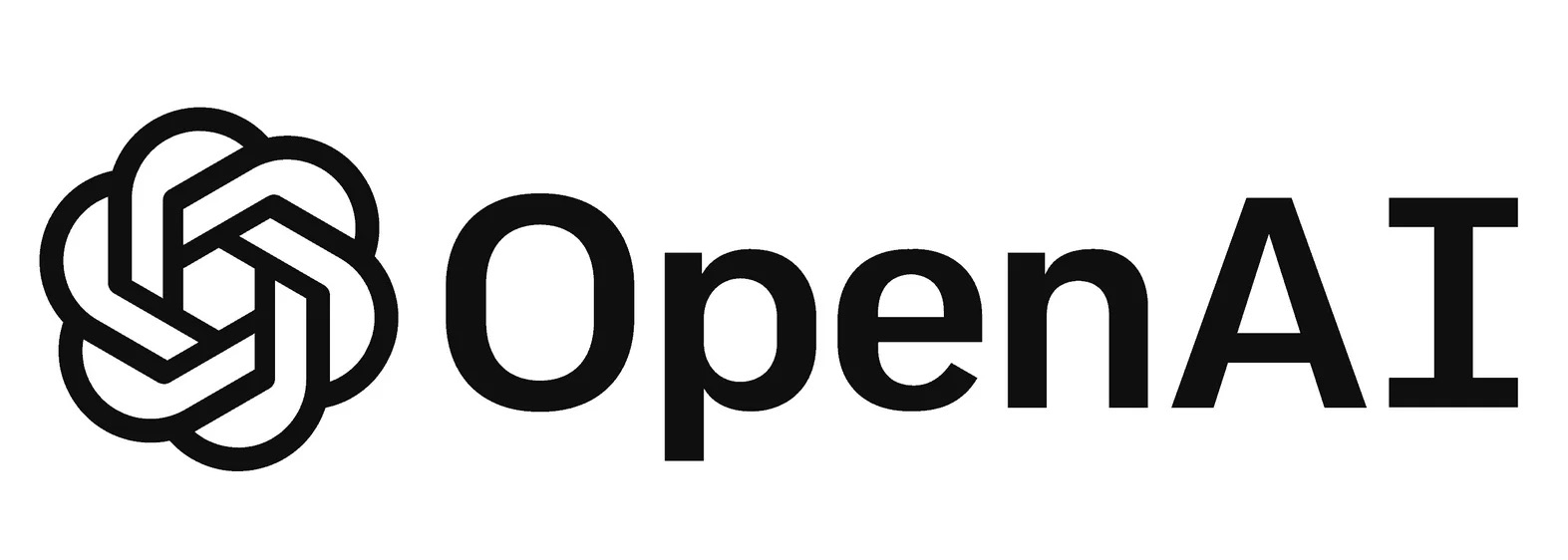
As artificial intelligence (AI) advances, ecommerce businesses turn to large language models to enhance chatbot capabilities. LLMs can understand, generate, and process human-like language, enabling more natural and engaging conversational experiences. Here's how leveraging LLMs can revolutionize ecommerce chatbots.
Train Your Chatbot on Your Data
A key advantage of LLMs is their ability to be fine-tuned on specific datasets. This allows chatbots to learn and adapt to the unique language, terminology, and context of your business. By training your chatbot on your product catalogs, customer interactions, and domain-specific knowledge, you create a highly personalized and knowledgeable virtual assistant. This helps chatbots provide accurate and relevant responses.
Have a Human-like Experience
LLMs generate human-like language, enabling chatbots to engage in more natural and contextual conversations. This capability is valuable in ecommerce where customers expect a personalized experience. With LLMs, chatbots understand nuanced language, pick up on contextual cues, and respond in a way that feels more human-like. This fosters trust and enhances the overall customer experience.
Personalized Recommendations
Ecommerce chatbots can provide highly personalized product recommendations by leveraging LLMs. These recommendations are based on customer preferences, purchase history, and conversational context. LLMs analyze vast amounts of data, including customer interactions and product reviews, to identify patterns. This helps make intelligent recommendations that increase the likelihood of successful sales.
Automations
LLMs integrate with various automation tools and workflows, enabling chatbots to streamline and automate many tasks. From order processing and inventory management to customer support and marketing campaigns, LLMs help businesses optimize operations, reduce manual effort, and improve overall efficiency.

No trial. Generous free plan.
Measuring Chatbot Success in Ecommerce
Implementing an ecommerce chatbot is just the first step. Measuring its success and impact is equally crucial. By tracking the right metrics and analyzing performance data, businesses can optimize strategies, identify areas for improvement, and quantify the return on investment (ROI). Here's how to measure the success of your ecommerce chatbot.
Key Performance Indicators (KPIs)
Tracking relevant KPIs is essential for measuring the effectiveness of your ecommerce chatbot. Consider these key metrics:
- Conversation Volume: The number of conversations initiated and handled by the chatbot. This indicates its adoption and usage.
- Containment Rate: The percentage of conversations successfully resolved by the chatbot without human intervention. This reflects its ability to handle customer queries independently.
- Average Response Time: The average time it takes for the chatbot to respond to customer inquiries. Speed impacts customer satisfaction and engagement.
- Conversion Rate: The percentage of chatbot interactions that result in successful sales or conversions. This directly measures the chatbot's impact on revenue.
- Customer Satisfaction Score (CSAT): Measures customer satisfaction with the chatbot's performance, typically obtained through post-interaction surveys or ratings.
Analyzing Customer Satisfaction
While quantitative metrics provide valuable insights, qualitative data is equally important for gauging customer satisfaction. This can include:
- Sentiment Analysis: Analyzing the sentiment in customer conversations to spot areas of frustration or delight.
- Feedback and Reviews: Monitoring customer feedback and reviews to understand their perceptions and experiences with the chatbot.
- User Testing: Conducting user testing sessions to observe interactions and identify potential pain points or areas for improvement.
ROI Assessment
The success of your ecommerce chatbot should be measured by its impact on your bottom line. To assess ROI, consider:
- Cost Savings: The reduction in operational costs achieved by automating customer support and sales processes.
- Revenue Generation: The increase in sales and conversions due to the chatbot's personalized recommendations and streamlined checkout.
- Customer Retention: The impact of improved customer satisfaction and engagement on customer loyalty and lifetime value.
A/B Testing Chatbot Strategies
Continuously optimizing your chatbot's performance is essential for long-term success. A/B testing different strategies, such as conversational flows, messaging, and user interfaces, can provide valuable insights. Analyzing these test results helps refine your chatbot's approach for maximum impact.
Measuring the success of your ecommerce chatbot requires ongoing quantitative and qualitative analysis. By tracking the right metrics, analyzing customer satisfaction, assessing ROI, and continuously optimizing through A/B testing, you can ensure your chatbot delivers tangible value and enhances the overall customer experience.
Multilingual Support in Ecommerce Chatbots

Multilingual chatbots are crucial in today's global ecommerce landscape. Implementing multilingual support comes with challenges, but solutions exist.
Real-time translation capabilities offer significant benefits for ecommerce platforms. Businesses can effectively bridge language barriers and connect with a wider audience.
Importance of Language Support for Global Businesses
As ecommerce businesses expand globally, providing support in multiple languages becomes essential. Customers are more likely to engage and make purchases from businesses that communicate in their native language.
Challenges and Solutions in Implementing Multilingual Chatbots
Implementing multilingual chatbots comes with challenges:
- Language Complexity: Different languages have varying grammar rules, idioms, and cultural nuances. This complexity can challenge chatbots to understand and respond accurately.
- Data Availability: Training chatbots in multiple languages requires large datasets of conversational data for each target language.
- Integration and Scalability: Integrating multilingual support into existing systems and ensuring scalability across multiple languages can be technically complex and resource-intensive.
To overcome these challenges, businesses can use AI techniques, such as machine translation and LLMs.
Real-time Translation Capabilities
One of the most powerful features of multilingual chatbots is real-time translation capabilities. This allows customers to communicate in their preferred language while the chatbot translates and responds appropriately, enabling seamless cross-language interactions.
Real-time translation can be achieved by integrating with machine translation services or training chatbots on parallel corpora (datasets containing text in multiple languages).
Ecommerce chatbots have revolutionized business-customer interactions by providing personalized support and recommendations throughout the shopping journey. By leveraging AI, chatbots deliver exceptional customer experiences, drive sales, and streamline operations.
The future of ecommerce lies in seamless, conversational interactions, with chatbots leading this transformation.

Ready to dive into the latest tools and hack your business growth?
No trial. Generous free plan.